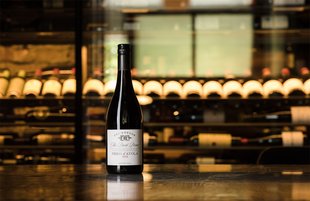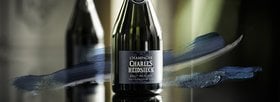Nero d’Avola Wine: Regions, Taste, 10 Best Wines (2025)
What makes Nero d’Avola a rising star among Sicilian red wines?
Today, many prominent Italian and New World winemakers use Nero d’Avola grapes to produce exquisite varietal wines.
However, this wasn’t always the case.
For a long time, Nero d’Avola wines were overshadowed by other illustrious Italian wines.
How did it’s fortune change?
Let’s explore the fascinating resurrection of this Sicilian grape, the wine regions, winemaking, flavor profile, and some great Nero d’Avola wines to buy in 2024.
Further reading
- Get ahead in the world of Wine Investment using this insightful guide.
- Curious to know how many calories are in your glass of dry red wine?
- Also find out how many glasses you can serve from one wine bottle.
A Quick Intro To Nero d’Avola

Nero d’Avola is a thick-skinned red grape variety native to Sicily.
The grape thrives in the hot Mediterranean climate and is one of the most widely planted grape varieties on the island (covering almost 18% of the Sicilian vineyard lands.)
Nero d’Avola produces full-bodied fruity wines similar to Syrah. Its taste profile also draws comparisons with popular red grapes like Merlot and Pinot Noir.
Many eminent Sicilian DOC and IGT wineries use Nero d’Avola to make single varietal or blend wines with other native grapes like Nerello Mascalese (grown around Mount Etna), Frappato, and Perricone.
Some noteworthy examples include Cerasuolo di Vittoria, Contea di Sclafani, and Sambuca di Sicilia.
What’s the history behind this Sicilian grape?
A Brief History Of Nero d'Avola
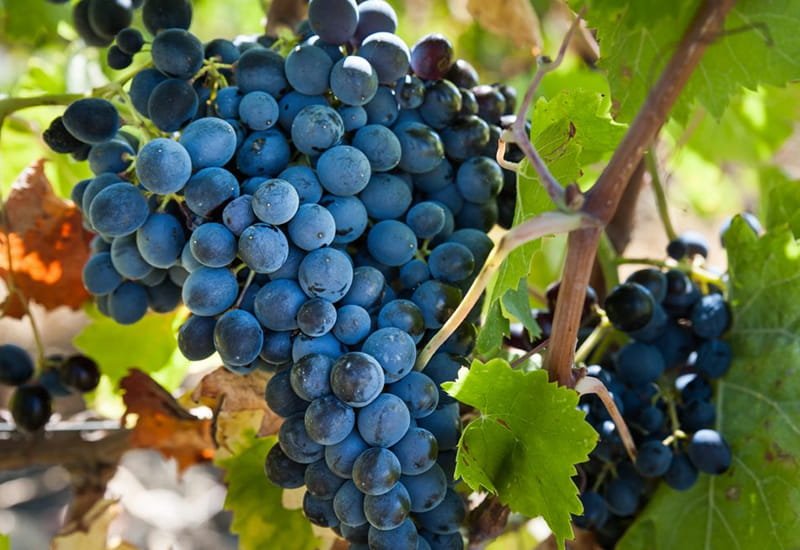
Nero d’Avola has been cultivated in Italy from as early as the 15th century, however, the exact origin of the grape remains uncertain.
It’s believed to have been originally planted in the town of Avola (Nero d’Avola, in Italian, means “black of Avola.”)
In 1696, the botanist Francesco Cupani referred to the grape as Calabrese. This suggests that the grape variety might have originated in the Calabria region of Southwest Italy.
Throughout the 20th century, Nero d’Avola was largely used as a blending grape to add to the color and body of low-quality red wines. Its name was rarely mentioned on the wine’s label.
However, during the 1980-90s, renowned winemakers like Planeta, Cusumano, and Donnafugata changed this trend.
They started using the grape to make top-notch single varietal wines and exceptional blends with Cabernet Sauvignon, Syrah, and Merlot.
Next, let’s explore the wine regions where Nero d’Avola grows.
Nero d'Avola Wine Regions
In the last 50 years, the Nero d’Avola vine plantations have spread out of their traditional home in Italy to the US and Australia as well.
1. Italy
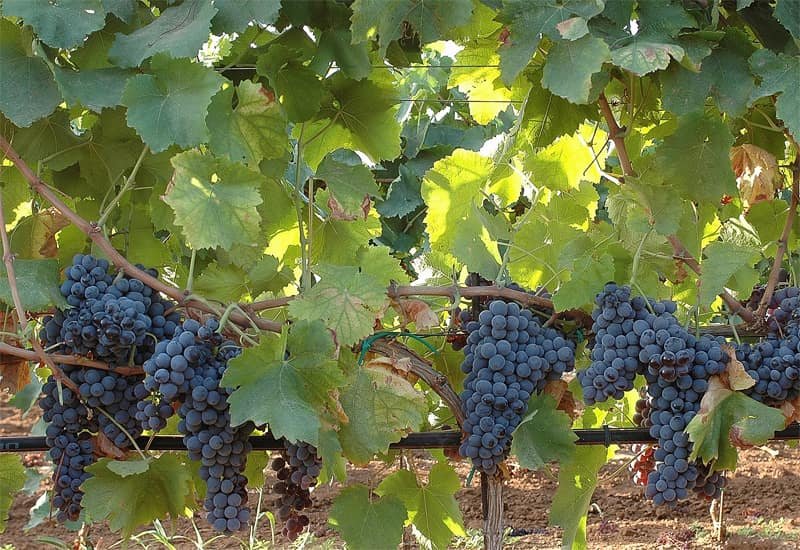
Sicily has almost 98% of the total Nero d’Avola vineyard acreage in the country.
Some of the best Nero d’Avola vineyards are in Syracuse, Avola, Eloro, Noto, and Pachino.
The Nero d’Avola varietal plantations are also present in:
- Menfi: In the province of Agrigento in western Sicily
- Vittoria: A vineyard site in the Ragusa province, famous for its classic blend of Frappato and Nero d’Avola
- Capo Milazzo: Located in Northern Sicily and known for Mamertino (a blend of 70% Nero d’Avola and 30% Nocera)
- Riesi: In the province of Caltanissetta
Until 2016, Nero d’Avola wines were largely classified as Terre Siciliane or Sicilia IGT.
But according to the new appellation rules, Nero d’Avola wines made after 2016 can only be sold with a DOC or a DOCG label. Today, they are classified as Sicilia DOC.
2. The USA
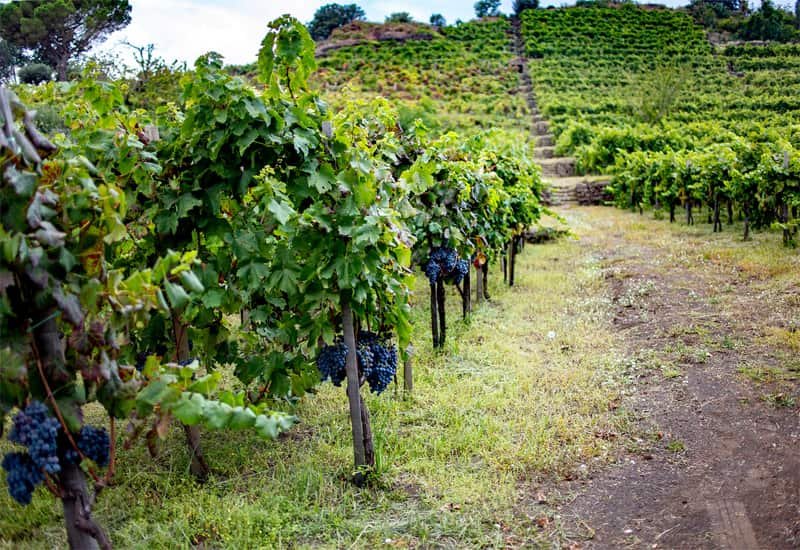
In the US, Nero d’Avola is dry-farmed in wine regions like Mendocino County in California. Some of the prominent vineyard sites in the region include Chiarito, Benson Ranch, and Fox Hill Vineyards.
Winemakers like Campovida and Martha Stoumen have made high-quality vintages from the Nero d’Avola vines sourced from these sites.
3. Australia
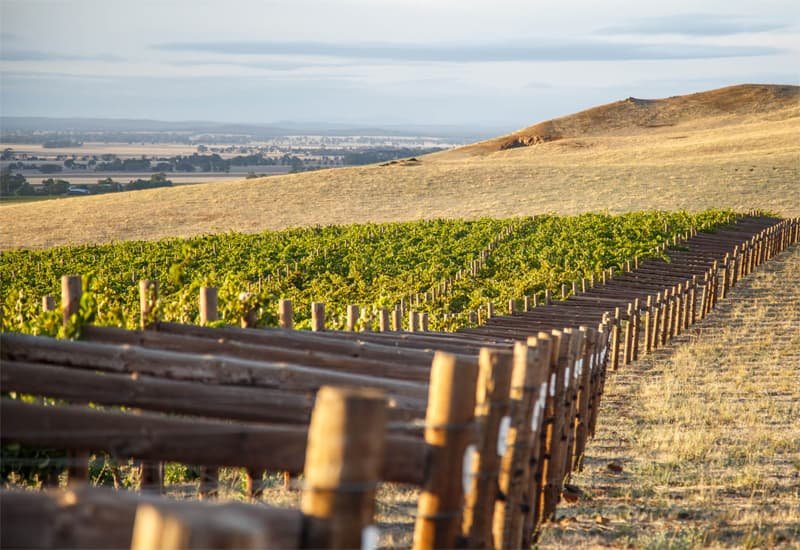
Nero d'Avola vines were first imported to Australia in 1998 by the Chalmers family. The arid climate in the Australian wine regions serves as a natural second home to Nero d’Avola.
Today, it’s being cultivated in nearly 55 vineyard sites in:
- Riverina
- McLaren Vale
- Barossa Valley
- Sunraysia
Winemakers like Brad Hickey, Coriole, Berg Herring have made great single expressions of Nero d’Avola.
Let’s dive into the winemaking process behind the sensual Nero davola wines.
Nero d’Avola Winemaking
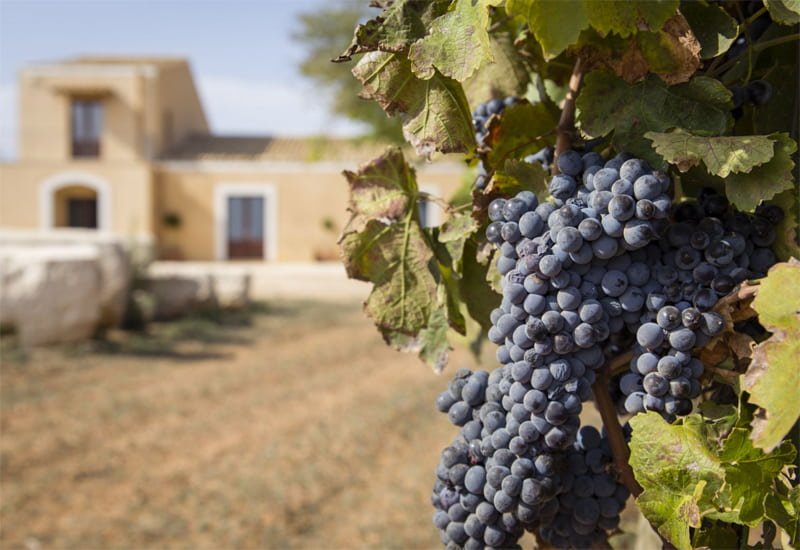
The hardy Nero d’Avola grape can adapt to different soil types and microclimates.
This allows the winemaker to explore different viticulture and vinification techniques, resulting in unique, delectable expressions of the grape.
- Harvesting: Nero d’Avola vines are usually harvested in September. After destemming, the fruit is crushed and soaked with the grape skins for 8 to 21 days.
- Fermentation: The fermentation happens at a controlled temperature (25-28 degrees Celsius) in steel vats or concrete tanks. Racking may be followed by malolactic fermentation to enhance the flavors.
- Aging: The wine is finally left to mature in French oak barrels for about 8-18 months. After bottling, it may be left to age for a few more months in the cellar before it’s ready to drink.
Curious to know what Nero d’Avola wines taste like?
Let’s take a look.
Flavor Profile, Food Pairings, And Serving Guide

The Nero d’Avola grape produces delicate but complex blends and single varietal red wines.
The wine has a robust body and dark fruity flavors of plum, blueberry, black cherry, and dried fruit. It usually has robust tannins, high acidity, and alcohol levels of about 13.5% - 14.5% ABV (alcohol by volume.)
The strong body, high tannin, and acidity of the Nero d’Avola wines pair well with rich meaty dishes, such as barbequed meat, oxtail soup, beef stew, or charcoal-grilled steak.
On the vegetarian front, it goes well with shitake mushrooms and black lentil dishes.
Serve Nero d’Avola wine in a big red wine glass at room temperature (16-20 degrees Celsius.)
Now check out some exquisite Nero d’Avola wines to try in 2024.
Best Nero d’Avola Wines To Buy In 2024 (Including Tasting Notes, Pricing)
Here’s a list of some finely-crafted Nero d’Avola wines:
1. 2014 Donnafugata 'Mille e Una Notte' Contessa Entellina
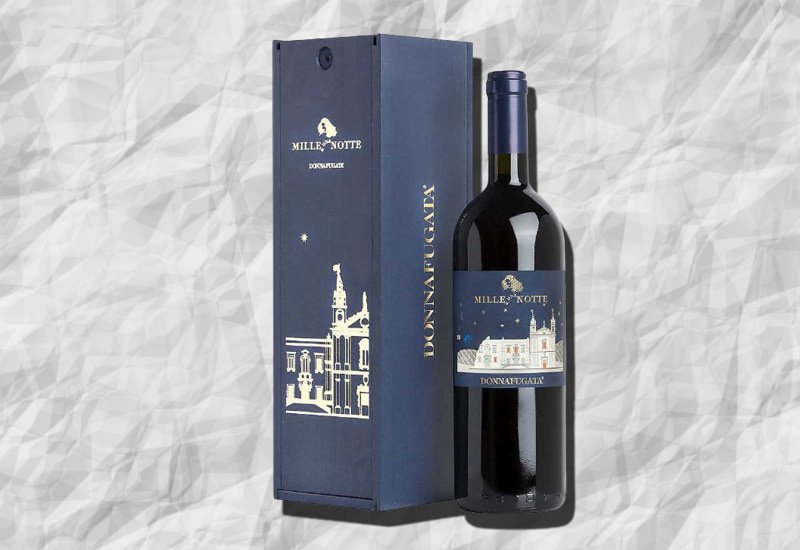
This great wine from Donnafugata comes from the vineyards of the Contessa Entellina appellation in Western Sicily.
It’s a full-bodied wine with refreshing acidity and tasting notes of blackberry, plum, and black cherry. The opulent nose has notes of tobacco, liquorice, leather, and spice.
The palate is polished with velvety tannins.
Sip this wine now or wait for it to fully mature around 2030.
Price for 2014 Donnafugata 'Mille e Una Notte' Contessa Entellina: $88
2. 2016 Donnafugata 'Mille e Una Notte' Contessa Entellina
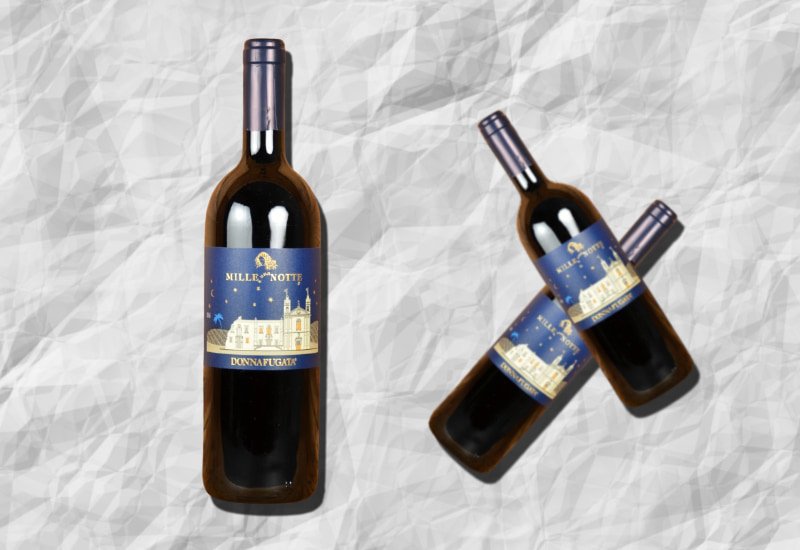
This 2016 vintage is yet another stellar Nero d’Avola offering from the Italian Donnafugata winery.
It gives off fruity notes of black cherry, blackcurrant, plum, liquorice, and nutmeg. The palate has soft tannins and a savory finish.
Price for 2016 Donnafugata 'Mille e Una Notte' Contessa Entellina: $82
3. 2012 Planeta Santa Cecilia Noto
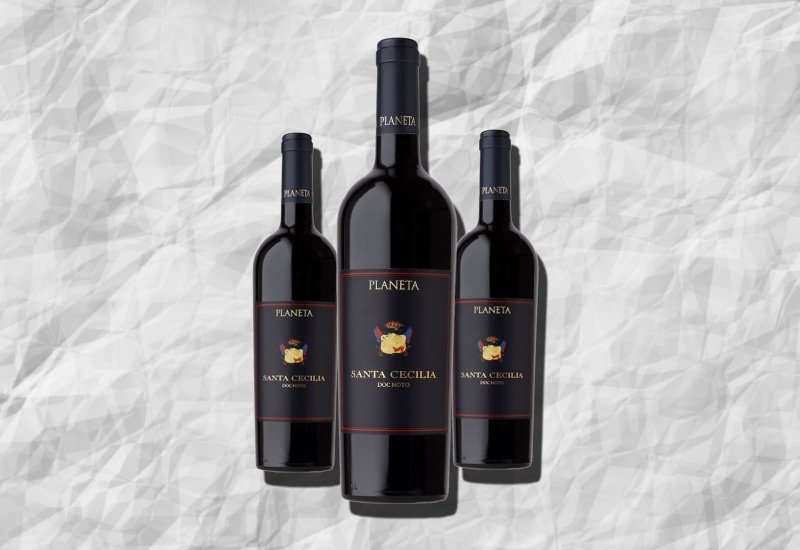
This 100% Nero d’Avola wine comes from the celebrated wine region of Noto in southeastern Sicily.
The purple-colored wine is spicy with an intense fruity aroma. On the palate, it has notes of black fruit, wild blueberry, and cherry. The tannin is dense and textured.
Price of 2012 Planeta Santa Cecilia Noto: $352
4. 2010 Tasca d'Almerita Tenuta Regaleali 'Riserva del Conte' Contea di Sclafani
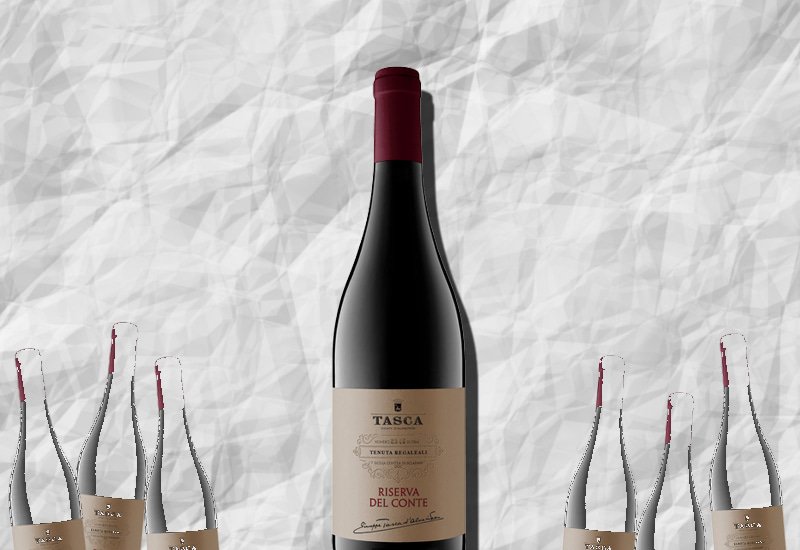
This highly rated Tasca d'Almerita red wine is a blend of Perricone (70%) and Nero d’Avola (30%) grapes, harvested from the Regaleali Estate vineyards.
The wine has a deep red color and aromas of Filigree raspberry, minerals, and dried herb.
On the palate, it offers robust tannin with fruity plum notes and hints of tobacco, liquorice, and pepper.
Price of 2010 Tasca d'Almerita Tenuta Regaleali 'Riserva del Conte' Contea di Sclafani: $72
5. 2010 Azienda Agricola Arianna Occhipinti ‘Passo Nero’
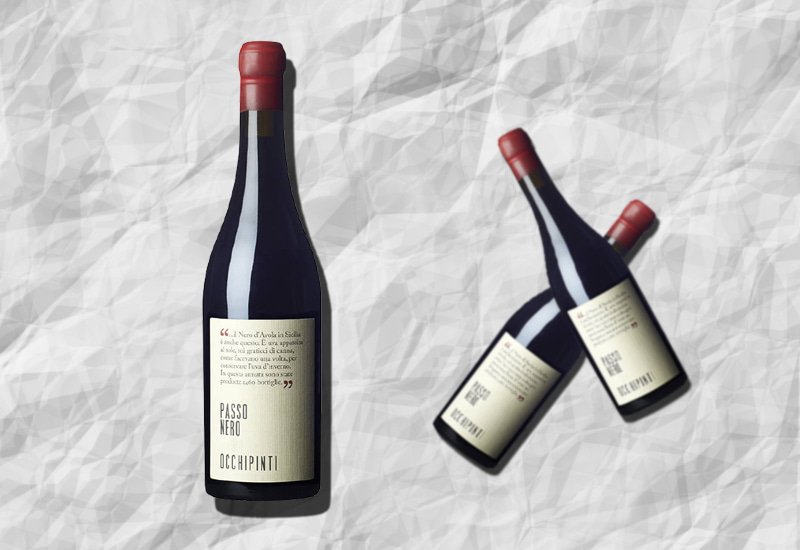
This 2010 vintage from Arianna Occhipinti is a deep ruby red color and offers an intense aroma of dark fruits on the nose.
On the palate, you’ll get syrupy notes of red fruit, with hints of liquorice, cinnamon, graphite, and tree bark. The soft tannins give the wine a smooth texture and a persistent finish.
Price of 2010 Azienda Agricola Arianna Occhipinti Passo Nero: $96
6. 2013 Valle dell'Acate 'Iri da Iri'
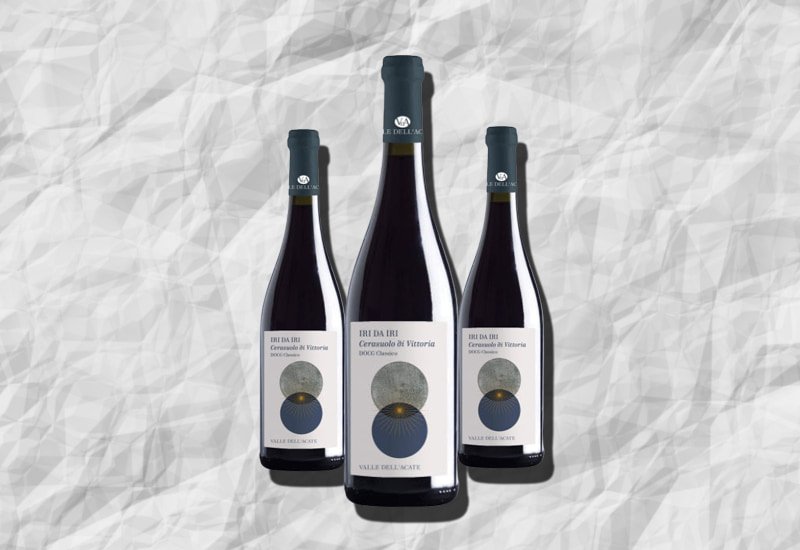
This 2013 vintage from Valle dell'Acate is a classic sicilian wine blend of Frappato and Nero d’Avola from the DOCG appellation of Cerasuolo di Vittoria.
The wine opens with whiffs of dark fruit, vanilla, and woods. The palate is dense with rich tannins and flavors of forest berries, tar, and oak.
Price of 2013 Valle dell'Acate 'Iri da Iri': $65
7. 2009 Duca di Salaparuta Duca Enrico Rosso Sicilia IGT

2009 Duca di Salaparuta Duca Enrico Rosso Sicilia IGT is credited as the first wine made exclusively from the Nero d'Avola grape variety.
The nose gives off red fruit, spices, and leather notes. Tasting notes of blackberries, tobacco, liquorice, and dried herb dominate the palate, along with velvety tannins.
Price of 2009 Duca di Salaparuta Duca Enrico Rosso Sicilia IGT: $117
8. 2010 Duca di Salaparuta Duca Enrico Rosso Sicilia IGT

The 2010 vintage from the prominent Sicilian winery gives off intense aromas of dark fruit (plum and prunes), leather, and cardamom spice.
The palate delivers smooth tannins with creamy texture along with notes of blackberry and liquorice.
You can enjoy this great wine today or let it mature fully until 2024.
Price of 2010 Duca di Salaparuta Duca Enrico Rosso Sicilia IGT: $78
Do Nero d’Avola Wines Age Well?
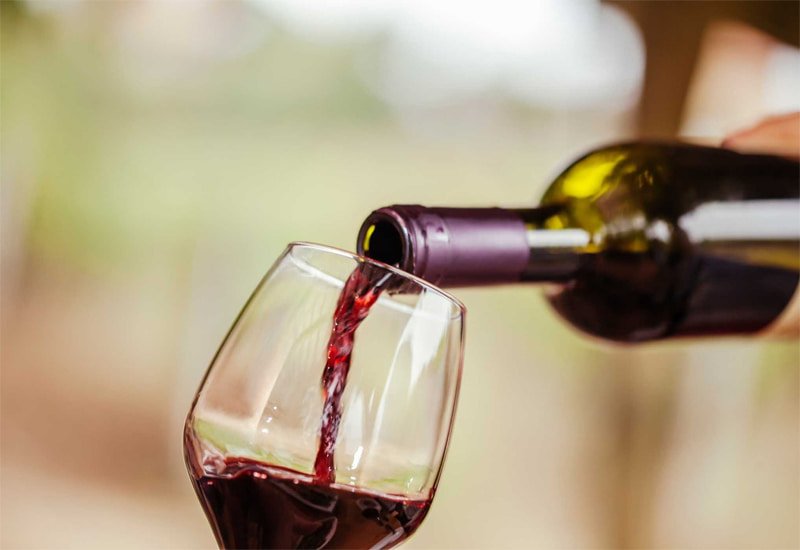
The aging potential of Nero d’Avola wines depends on the winemaking style.
Most Nero d’Avola wines are best to drink young (within a few months after bottling.)
However, higher-end wines that are harvested and vinified in low yields and aged for long periods in oak barrels can easily be stored for 8-12 years.
In any case, Nero d’Avola wines are a delicious treat for wine lovers across the globe.
However, if you’re looking for investment-grade wines that can cellar for decades, you have plenty of other spectacular options.
A wine investment company like Vinovest can help you find some of these rare collectibles.
Buy, Store, And Sell Investment-Worthy Wines Through Vinovest

Vinovest is a wine investment company that helps you build a portfolio of fine wines, from the comfort of your home.
So it doesn’t matter if you don’t have extensive wine industry knowledge or insider info!
How Does It Work?
Start investing in five simple steps:
- Sign up on the Vinovest website with your name, email, and password.
- Fill out a questionnaire to share your investment preferences and risk appetite.
- Add a minimum of $1,000 to fund your account.
- Let Vinovest build and grow your wine portfolio while you enjoy a glass of your favorite Pinot Noir or Chardonnay.
The Benefits Of Investing through Vinovest
Here are some key benefits of using Vinovest:
1. Buy And Sell Authentic Wines Using AI-Driven Technology
Vinovest’s AI-based platform makes it super easy to buy and sell fine wines with just a few clicks.
The Vinovest team makes sure your wine is authentic, so you don’t have to worry about getting a counterfeit bottle ever again.
2. Get The Best Prices
When you buy a bottle of wine through Vinovest, rest assured that you pay a fair price without any middleman or retailer markups. Vinovest sources your wines directly from the winemaker, merchants, or wine exchanges at the best possible prices.
3. Curated Portfolio by an Expert Wine Advisory Team
To create your winning portfolio, the Vinovest team comprising wine experts use historical data and proprietary financial models.
4. Optimal Storage
With Vinovest, your wine collection is in safe hands.
Your wines will be safe in world-class wine storage facilities in France, the UK, Switzerland, and other global wine industry hotspots. This proximity to major wine regions reduces excessive movement and vibration that could damage the wine.
Also, the warehouses maintain perfect light, temperature, vibration, and humidity conditions.
5. Deep Network
Vinovest gives you access to an extensive wine network.
You receive timely information on upcoming vineyards, private sales of wine companies, and limited releases of new wines.
You can also join wine tastings with Vinovest’s Master Sommeliers, who often host reputed winemakers.
6. Low Overall Costs and Tax Benefits
Vinovest charges a minimal annual fee of 2.5% (or 1.9% for a portfolio of above $50,000.)
This fee includes wine buying, selling, and storage costs, as well as authentication, insurance, and portfolio management.
You also enjoy significant tax advantages as the bonded warehouses don’t charge excise duty or VAT.
7. Easy Delivery
Vinovest ensures that your wine gets safely and timely delivered for your enjoyment. In case you choose to sell it for a profit, it’ll get delivered to a counterparty buyer no matter the location.
Get Sicilian Wine and Other Fine Bottles For Your Portfolio
Nero d’Avola wines have been around for ages in Sicily, and they're finally getting much-deserved recognition internationally.
However, if you’re looking for investment-grade wines, you can easily build a portfolio through Vinovest.
So, why not sign up today and start your wine investment journey?
